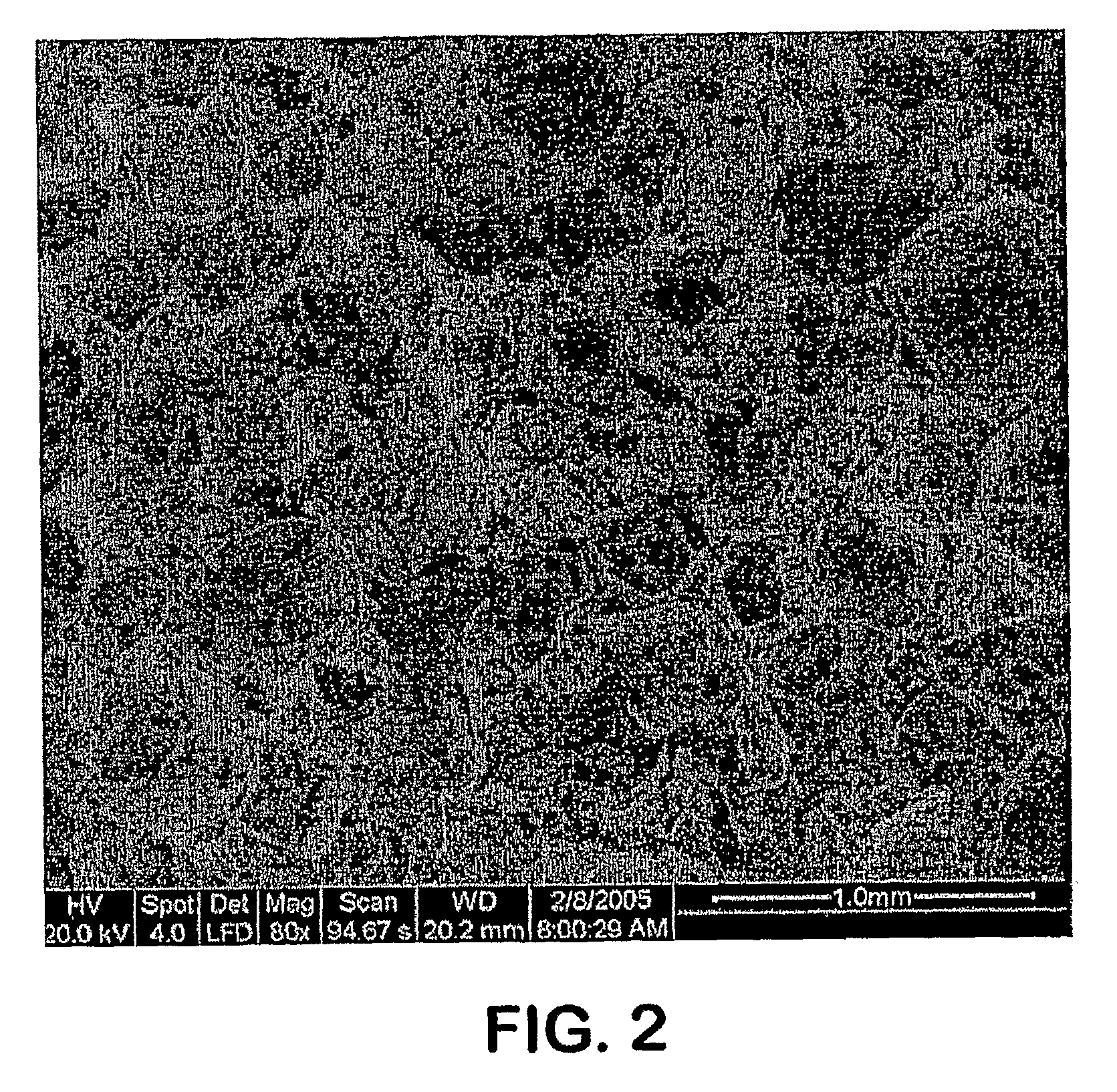Bioresorbable composite for repairing skeletal tissue
a bioresorbable composite and skeletal tissue technology, applied in the direction of prosthesis, microcapsules, capsule delivery, etc., can solve the problems of reduced graft incorporation rate compared, possible pathogen transfer from donor to host, and less than ideal overall integration with host tissu
- Summary
- Abstract
- Description
- Claims
- Application Information
AI Technical Summary
Benefits of technology
Problems solved by technology
Method used
Image
Examples
example 1
[0090]In this example, polylactide, polyglycolide, and polylactic-co-glycolic acid) polymers were synthesized, reacted with a fumaryl compound, and crosslinked to produce a biomedical composition in accordance with the present disclosure.
[0091]In the first step, short hydroxyl-terminated polylactide, polyglycolide, or poly(lactic-co-glycolic acid) chains were synthesized by melt ring-opening polymerization of the lactide, glycolide, or lactide-glycolide monomer with diethylene glycol as the initiator and tin II-ethyl hexanoate as the reaction catalyst.
[0092]The molar ratio of initiator to catalyst was 25. The molar ratio of monomer to initiator was varied from 30 to 10. The polymer was purified by vacuum. Then the polymer was precipitated in multiple solvents including methanol, ether, and hexane.
[0093]The synthesized polylactide, polyglycolide, or poly(lactic-co-glycolic acid) was characterized by variety of chemical analysis techniques including 1H-NMR, FTIR, and gel permeation ch...
example 2
[0097]In this example, hydrophilic groups were incorporated into the biodegradable polymer.
[0098]In the first step of synthesis, poly(lactide-co-glycolide) blocks were synthesized by melt ring opening polymerization of the lactide and glycolide monomers, as described in Example No. 1. The molar ratio of lactide to diethylene glycol was varied from 10 to 30 to produce low molecular weight polylactide chains with average molecular weights (Mn) in the range of 1000 to 4000 Dalton. The synthesized polymer was characterized by 1H-NMR, FTIR, and gel permeation chromatography (GPC). The polydispersity index of the polymer was 1.5-1.6 independent of the polymer molecular weight. The degree of crystallinity of the polymer was also independent of molecular weight in the Mn range of 1000 to 4000 Dalton. The melting point of the semi-crystalline polymer, measured by DSC, depended on the molecular weight of the polymer.
[0099]Poly (lactide-co-glycolide fumarate) (PLEOF) was synthesized by condens...
example 3
[0104]In this example, a composite biodegradable polymer was produced in accordance with the present disclosure.
[0105]PLEOF Synthesis
[0106]Low molecular weight poly(lactic acid) (LMW PLA) was synthesized by ring opening polymerization of the lactide monomer (LA) in a dry atmosphere with diethylene glycol (DEG) as the bifunctional initiator and tin octoate (TOC) as the polymerization catalyst. The molar ratio of DEG to TOC was 25:1. The molar ratio of LA to DEG was varied from 10 to 30 to produce LMW PLA with average molecular weights (Mn) in the range of 1000 to 4000 Dalton. The synthesized LMW PLA was characterized by 1H NMR and gel permeation chromatography (GPC). PLEOF was synthesized by condensation polymerization of LMW PLA and poly(ethylene glycol) (PEG) with fumaryl chloride (FuCl) and triethylamine (TEA) as the catalyst. The molar ratio of FuCl:PEG and TEA:PEG was 0.9:1.0 and 1.8:1.0, respectively. PLEOF terpolymer was synthesized using PEG with Mn ranging from 1 to 4.5 kD a...
PUM
| Property | Measurement | Unit |
|---|---|---|
| number average molecular weight | aaaaa | aaaaa |
| number average molecular weight | aaaaa | aaaaa |
| number average molecular weight | aaaaa | aaaaa |
Abstract
Description
Claims
Application Information
 Login to View More
Login to View More - R&D
- Intellectual Property
- Life Sciences
- Materials
- Tech Scout
- Unparalleled Data Quality
- Higher Quality Content
- 60% Fewer Hallucinations
Browse by: Latest US Patents, China's latest patents, Technical Efficacy Thesaurus, Application Domain, Technology Topic, Popular Technical Reports.
© 2025 PatSnap. All rights reserved.Legal|Privacy policy|Modern Slavery Act Transparency Statement|Sitemap|About US| Contact US: help@patsnap.com



